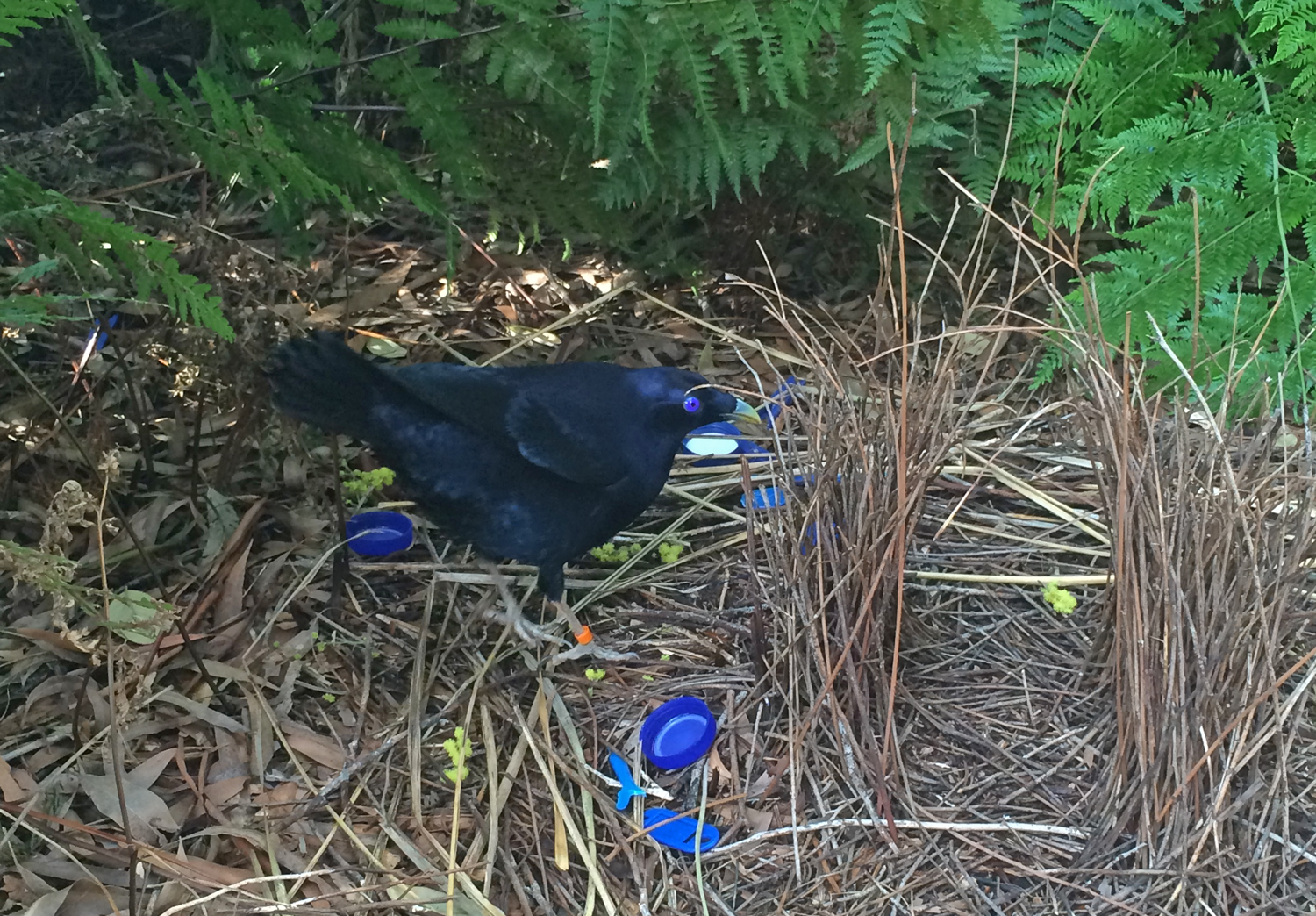We were lucky to catch the male bowerbird dancing and singing, trying to attract a female at his nest in Melbourne Museum. Male bowerbirds decorate their nests with bright blue objects in an attempt to nab the perfect partner.
The satin bowerbird is thought to go for blue objects because it reflects its colouring, which in turn entices the right mate.
Wondering what bowerbirds did before blue plastic appeared on their decor wishlist, I consulted the glorious intertubes and found this little morsel of goodness:
– from the book Survival of the Beautiful – Art, Science, and Evolution, by David Rothenberg.“Who built this?” I wondered. “A male satin bowerbird.” Syd smiled. “This creation is called his bower. It’s not a nest, but an artwork he builds with the hopes he can attract a female to visit it, observe his performance in and around the bower, and if he’s lucky mating might just occur!” I still don’t get it. “What about the spoons?”
“Ah, I almost forgot,” say Syd. “It’s not enough for our boy to build a bower. He has to decorate it with something blue. Blue flowers, blue shells, the blue feathers of rollers of parakeets. Sometimes they paint the things with blue pigment that they grind up from fruit pulp with their beaks. Nowadays they raid picnic tables up to ten miles away if they see readymade blue decorations. What I thought was litter turned out to be my first discovery of the origins of art, the material of a creative process millions of years older than the ancient cave paintings of Lascaux.
The satin bowerbird has known that blue is the color, the most beautiful, best and right color, for eons longer than human beings have been around on this planet to invent utensils designed to be used only once.”
Have you ever seen a bowerbird in the wild?

